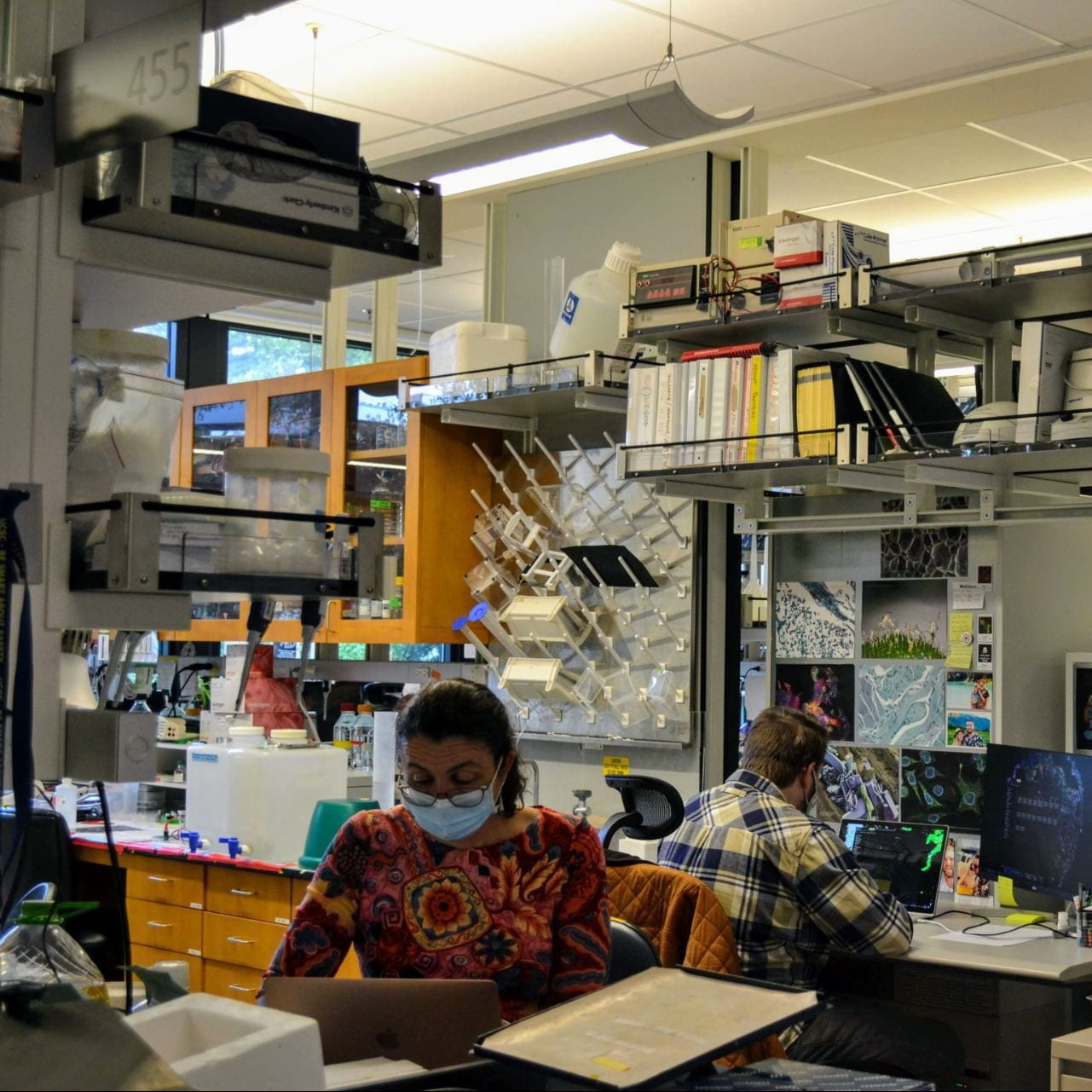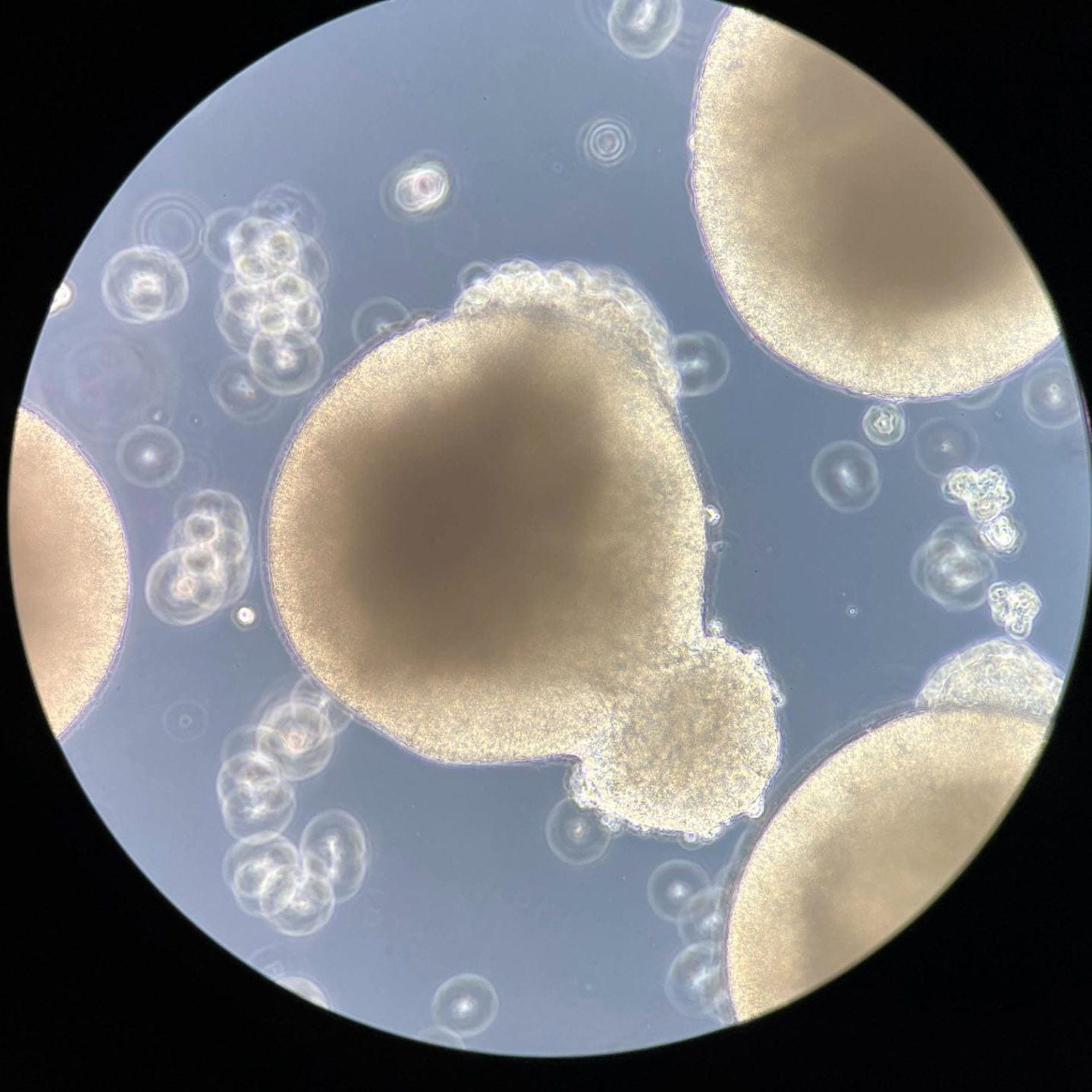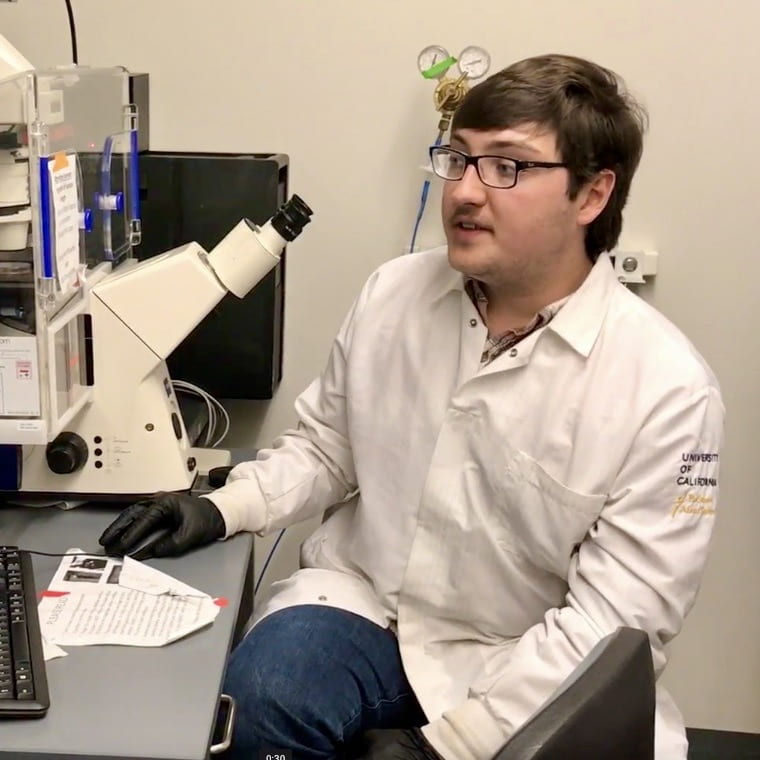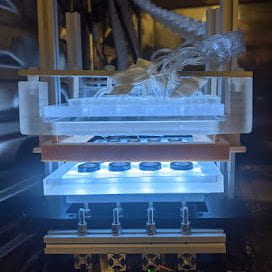The Haussler-Salama lab was founded in 2004 with funding from the Howard Hughes Medical Institute to explore the function of newly evolved and highly conserved human genome sequences as revealed by comparative genomics analysis. Current research uses human and ape pluripotent stem cells to explore how retrotransposons yield new gene regulatory networks, how recent segmental duplications contribute to human specific features of the brain and susceptibility to neurodevelopmental disorders and how to build better brain organoid models to study brain function, neurological and neuropsychiatric disorders, and brain cancers.

Fluorescently Labeled Organoid Images
(Click for more pictures)

Salama/Haussler Lab
(click for more pictures)

Young Organoid Cultures

Pluripotent Stem Cells Enable Retrotransposon Analysis
Projects
Neurodevelopment
The lab works with human and ape cell cultures to understand evolutionary changes leading to the large and complex modern human brain and to uncover molecular mechanisms underlying brain development and disease.
Retrotransposons
We are developing tools to identify and characterize retrotransposons, which are a major source of new DNA in our genome. We are tracing how evolutionary “arms races” between retrotransposons and their transcriptional repressors, KRAB zinc-finger (KZNF) proteins, lead to new gene regulatory mechanisms.
Pediatric Glioma
We use computational approaches and to identify less toxic and more effective treatment options against pediatric brain cancers and we are developing methods to use personalize organoid cultures to test promising treatment options.
Braingeneers
Stem cell derived 3-D brain organoid cell cultures are a powerful tool for human brain research. The Braingeneers are deploying molecular, engineering and computational approaches to develop more robust and comprehensive brain organoid models.
Live Cell Technology
We develop automation to revolutionize the growing and analysis of organoid cultures. This collaboration between engineers and biologists will optimize culture conditions and enable remote experiment manipulation for research and education.

